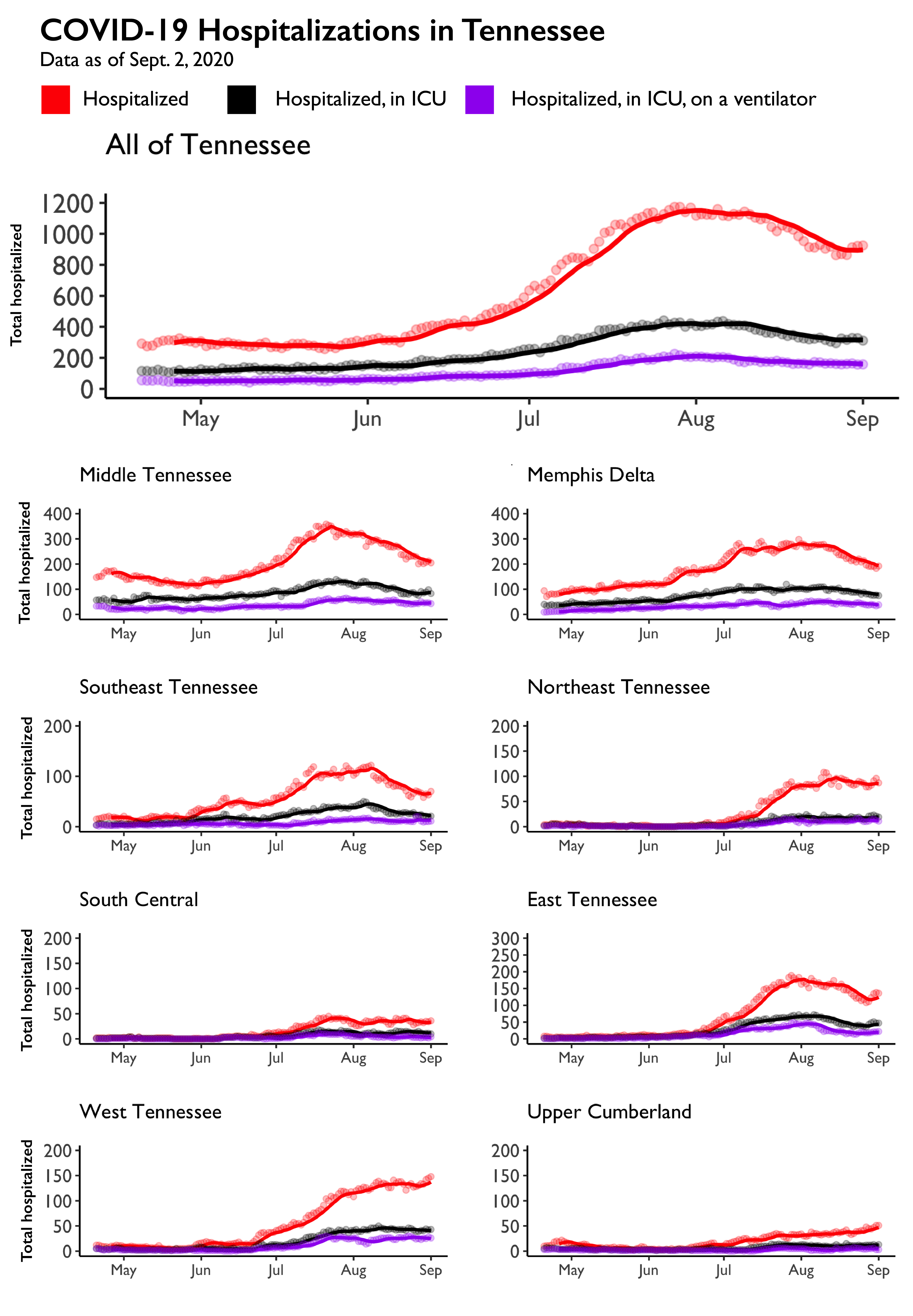
Sept. 3, 2020 — Since late July, Tennessee has seen stable or declining numbers of hospitalized COVID-19 patients, but there are some early signs this trend is reversing in some regions of the state.
Faculty researchers in the Department of Health Policy in the Vanderbilt University School of Medicine and Vanderbilt University Medical Center have observed stable or declining hospitalizations in metro areas including Nashville, Memphis and Chattanooga. However, other areas—including the Upper Cumberland, West Tennessee and East Tennessee—have seen their hospitalized case numbers increase over the last week.
“Tennessee reached a high-water mark around 1,100 hospitalized COVID-19 patients in late July, and by late August those numbers had declined to under 900,” said John Graves, Ph.D., associate professor of Health Policy and director of the Center for Health Economic Modeling at Vanderbilt. “Right now the overall situation is stable at around 900 patients. But this overall stability masks progress in some areas, and a recent reversal of trends in others. Our aim with this analysis was to both highlight the positive news and to underscore the importance of continued diligence.”
The charts released today show the evolution of COVID-19 hospitalizations overall and by region as of Sept. 2, 2020. Researchers also stressed that hospitalizations are a lagging indicator. That means they reflect people who became infected 10 or more days before becoming sick enough to be hospitalized.
“That means even if we take action now as hospitalizations start to increase, it could take time to see hospitalization numbers improve again. It is critical to carefully watch these numbers so that we can take action early enough if it becomes necessary to avoid numbers getting too high.” said Melissa McPheeters, research professor in the Department of Health Policy and Department of Biomedical Informatics.
To date, the state’s health care system has not been overwhelmed, Graves said, and Tennesseans should continue efforts to take care of each other.
“Tennessee has, thus far, been largely successful at keeping COVID-19 hospitalizations from overburdening the health care system, which is something policymakers and citizens should be proud of,” Graves said. “In areas where we are seeing hospitalization increases, the median age of positive cases has been higher than in earlier stages of the pandemic, which can help explain the increase. It’s far too early to assess the contribution, if any, of other factors, including the reopening of schools across many areas of the state. What our analysis does makes clear is that as we approach the fall, we’re not close to being out of the woods. We have to keep our focus on taking care of ourselves and our neighbors. Our primary goals need to be focused on keeping the state safely open for education, health care, and businesses.”